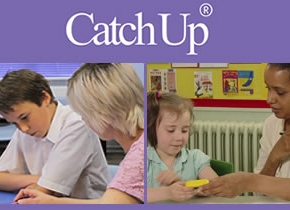
Request a full Catch Up® information brochure and details of our free information webinars
Find out more
Q: If you had 8 apples in one hand and 5 apples in the other, what would you have?
A: Really big hands!
There are quite a few changes to Numeracy in the Revised Primary Curriculum and as these are deliberately aimed at raising the bar for pupils who do not find mathematics difficult (think PISA results), they could present a real challenge to those pupils who struggle with numeracy (and the adults trying to help them).
Basically, the revised curriculum is slightly less broad and a bit deeper (and there are a few surprises!).
The Programme of Study for Mathematics in the Revised Curriculum is set out on a year-by-year basis and although schools have some flexibility about when they teach content within each Key Stage, they do have to specify the curriculum for each year (and put this online for parents, governors and Ofsted).
This could be good news from the SENCO’s point of view as it could help to more readily identify pupils who are slipping behind age-related expectations.
So what’s gone in Key Stage 1?
Year 1
Catch Up® is the working name of The Caxton Trust, a not-for-profit charity registered in England and Wales (1072425) and Scotland (SC047557) as well as a company limited by guarantee (03476510). Catch Up is a registered trademark.
The Catch Up® Web site use "cookies" to help you personalise your online experience. A cookie is a text file that is placed on your hard disk by a Web page server. Cookies cannot be used to run programs or deliver viruses to your computer. Cookies are uniquely assigned to you, and can only be read by a web server in the domain that issued the cookie to you.
Click on the different category headings below to find out more. You can change your default settings very easily. To turn cookies on, click the button to the right. To turn cookies off, click the buttons to the left. Please read our cookie policy to find out more.
Performance monitoring cookies: Google Analytics cookies (_ga,_gid) - these can last up to 2 years.
Strictly necessary cookies used by the site content management system: PHPSESSID (used to record your logged in session) and allow_cookies (used to record that the user has consented to cookies) - these are either temporary (session) cookies or expire after no more than 30 minutes and are used to provide functionality as you navigate around the site and allow you to access secure areas.